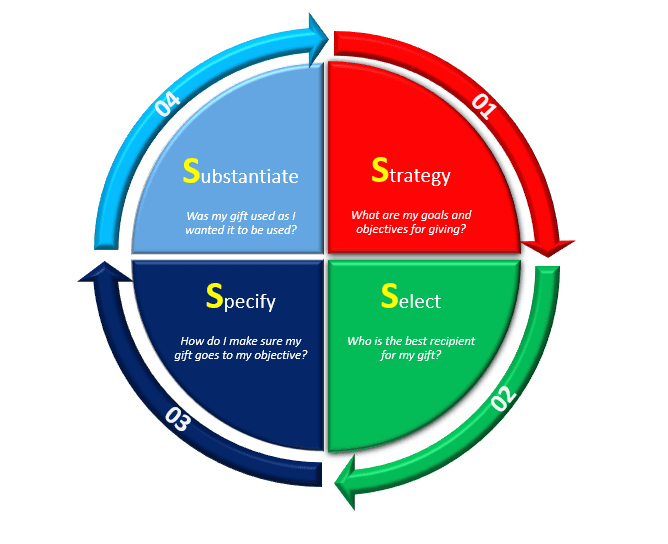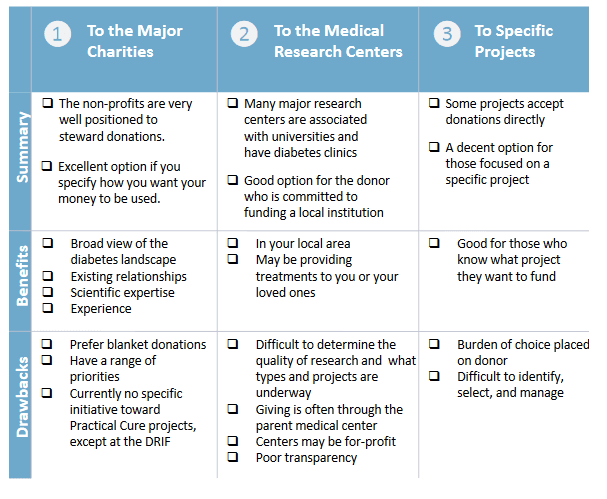
With the holiday season just around the corner, many people will make their annual donations to charitable organizations. Charitable giving is incredibly important for T1D where nearly 50% of all research funding relies on public generosity.
One of the most common and important questions that prospective donors ask is: "How do I make sure that my charitable donation is being used to make a genuine impact?” In this article, we share a disciplined approach that will increase the impact of any gift for T1D.
The 4S's of good giving approach is thoughtful, strategic, and specific. It is also straightforward, easy to implement, and will help ensure that your generosity is used in the way you want it to be used.
The 4S’s of Good Giving:
Strategy: What are my goals and objectives for giving?
Within the T1D community, we know from ongoing market research that nine out of ten people want their gifts to be used to fund cure research. In this case, the objective is to give a gift that is actually used for cure research— any other application would be off strategy.
Select: Given what I want to achieve, who is the best recipient of my gift?
It is often difficult to choose from the many fantastic organizations who would benefit from your donations. A little homework can help determine which organizations are doing the type of work you wish to support. There are many options within T1D, most of which are excellent choices. These can be broken down into three basic groups and are further described in Appendix A. The three categories are:
- Major charities such as the JDRF and ADA
- Medical research centers, either with a national presence or in your local area
- Specific research projects
Specify: When I make my donation, how do I ensure that it is used to achieve my objective?
This step is the one most often overlooked, yet is perhaps the most important. Most charitable organizations prefer to receive funds without restrictions and actively discourage specific gifts so they can use the money for whatever purpose they choose. However,when giving to a charity, the only way to ensure your money is used the way you want it to be used is to specify.
Write a letter along with your gift specifically stating how the donation should be used. For example, you might write: ‘This donation in the amount of $XXX is to be fully used to fund cure research grants.' If the recipient is not willing or able to use the money to fund cure research they are obligated to return the money.
Substantiate: Was my gift used the way I wanted it to be used?
Every donor, large or small, has the right to ask how a previous donation was used. This information can help you determine whether you want to continue or alter your giving strategy. Asking how your gift is used also keeps the recipients on their toes and reminds them they are accountable and dependent upon you, the donor.
A Note On Giving to the JDRF and ADA
Many of our readers have expressed concern about giving to the ADA or JDRF as they have become aware of the low levels of T1D research funding at the ADA and the continued decrease in research funding at the JDRF. Some have suggested they will stop giving to T1D causes altogether, which in our view, would be an unfortunate and undesirable outcome.
The 4S’s of Good Giving provides donation recommendations which we hope will keep the gifts within the T1D community by ensuring an even higher and more direct level of donation impact. The ADA and JDRF, due to their history, scale, and global reach are uniquely positioned to lead a research breakthrough in T1D. If you choose to continue supporting either organization, rather than one of the other T1D recipients, we strongly recommended writing a stipulation letter along with your gift to ensure your donation is used for cure research.
Appendix A: 'Select' Decision Tool

